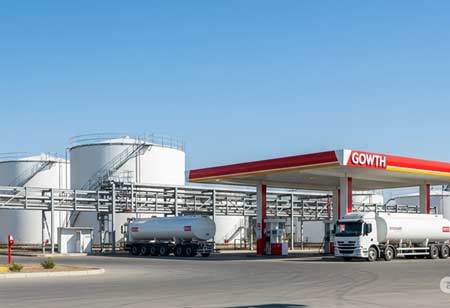Thank you for Subscribing to Energy Business Review Weekly Brief
Strategies for Growth in Gas Station Supply Distribution Amidst Competition
The gas station supply distribution market faces challenges from shifts in consumer behavior, technological advancements, and sustainability concerns.

By
Energy Business Review | Monday, October 13, 2025
Stay ahead of the industry with exclusive feature stories on the top companies, expert insights and the latest news delivered straight to your inbox. Subscribe today.
Fremont, CA: The gas station supply distribution sector, although historically stable, is now facing a landscape shaped by shifting consumer habits, technological advancements, and a growing focus on sustainability. To succeed in today's competitive environment, distributors must adopt innovative strategies for growth. It’s essential to think outside the box and find new approaches that can propel their business forward, ensuring they remain relevant and achieve success amid increasing market challenges.
Embracing Digital Transformation and Technology Integration
The future of gas station supply distribution is intrinsically tied to the adoption of digital technologies. To remain competitive and resilient, distributors must invest in advanced digital solutions that enhance operational efficiency, transparency, and customer satisfaction. Real-time tracking systems for fuel deliveries, inventory levels, and usage are now mission-critical, enabling instant alerts, digital proof of delivery, and consumption analytics. The transition from manual processes to AI-powered digital procurement platforms enables accurate demand forecasting, efficient order placement, and seamless access to invoices and audit trails, thereby significantly reducing errors and enhancing process consistency. Automated inventory management systems, including POS integration and predictive analytics, ensure optimal stock levels and minimize waste.
Strengthening Supply Chain Resilience and Efficiency
Recent global disruptions have underscored the need for more resilient and efficient supply chains. Distributors must adopt multi-sourcing strategies to reduce dependency on single suppliers or regions, thereby mitigating risks related to geopolitical issues or natural disasters. While just-in-time (JIT) inventory models offer cost benefits, maintaining safety stock for critical items is essential to avoid shortages—particularly when supported by AI-driven demand forecasting. Optimized logistics is another critical lever; AI-enabled route planning, backhauling strategies, and load optimization can reduce empty miles and fuel consumption. Investing in a well-maintained, fuel-efficient fleet further drives operational savings. Strong supplier relationships, built on clear communication and collaborative planning, enhance overall responsiveness and efficiency. Regular inventory audits help ensure alignment between recorded and actual stock levels, fostering transparency and reducing losses.
Focusing on Customer-Centricity and Relationship Building
In an increasingly competitive landscape, fostering customer loyalty through a customer-centric approach is essential. Distributors should collaborate with gas stations to develop tailored promotions, fuel discounts, bundled offerings, and loyalty programs that encourage repeat visits and boost in-store sales. Moving beyond transactional engagements, distributors must position themselves as trusted partners, offering tailored solutions for business growth, from marketing support to data analytics. Implementing customer segmentation strategies enables more personalized account management, whether through self-service digital tools or dedicated account managers. Streamlining order placement and communication via integrated online portals ensures a frictionless experience. Moreover, proactively gathering and acting on client feedback allows for continuous service refinement and helps address emerging pain points effectively.
Adapting to Market Shifts and Sustainability Initiatives
With the fuel distribution landscape undergoing rapid transformation, agility and foresight are vital. Monitoring fuel price fluctuations, evolving consumer preferences, and regulatory developments enables distributors to remain responsive in their pricing strategies and promotional efforts. The growing emphasis on environmental, social, and governance (ESG) standards necessitates the provision of sustainable solutions, including low-emission delivery options, carbon tracking capabilities, and access to cleaner-burning fuels. Collaborating with ESG-conscious vendors can further reinforce a distributor’s brand credibility and support corporate responsibility goals. Leveraging data analytics for informed decision-making across fuel and non-fuel offerings enhances strategic agility.
The gas station supply distribution market will reward those who are proactive, adaptable, and technologically savvy. By embracing digital transformation, diversifying offerings, strengthening supply chains, prioritizing customer relationships, and aligning with sustainability trends, distributors can navigate the competitive landscape and achieve sustainable growth. The key lies in understanding the evolving needs of gas stations and their customers, and then confidently leveraging technology and strategic partnerships to deliver unparalleled value and efficiency.






